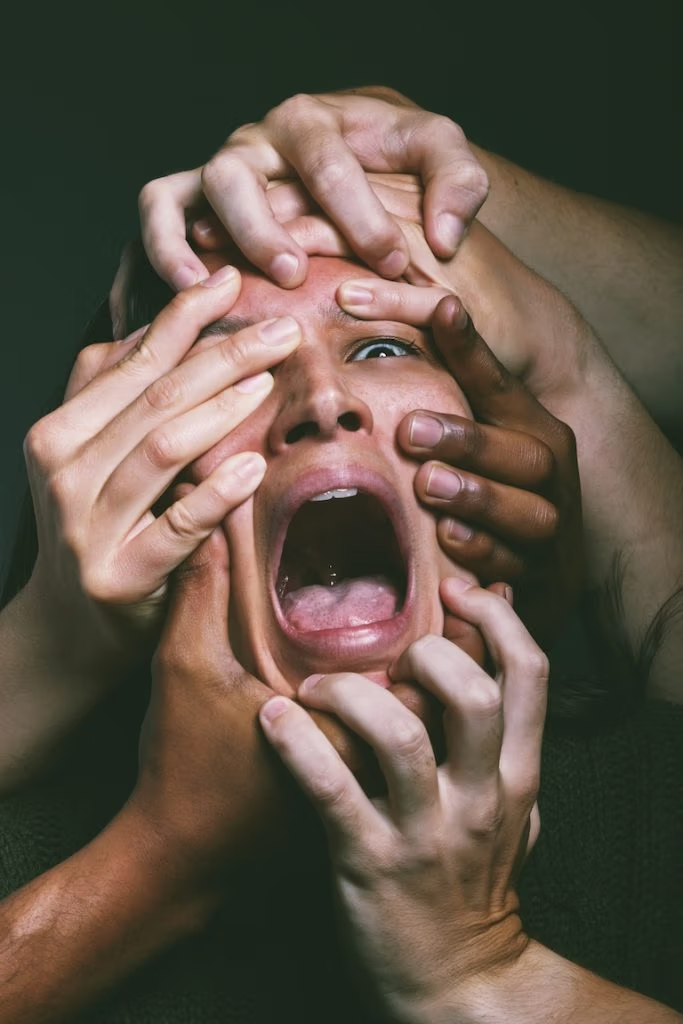Panic Disorder
Panic disorder is characterized by recurrent and unexpected panic attacks. Imagine a sudden surge of intense fear or discomfort that peaks within minutes, like a wave crashing over you without warning. These panic attacks can be terrifying and often lead to persistent worry about having more attacks or avoiding situations where attacks have occurred.
What does it look like?
A panic attack is a sudden episode of intense fear or discomfort that reaches a peak within minutes and includes at least four of the following symptoms:
- Palpitations, pounding heart, or accelerated heart rate
- Sweating
- Trembling or shaking
- Sensations of shortness of breath or smothering
- Feelings of choking
- Chest pain or discomfort
- Nausea or abdominal distress
- Feeling dizzy, unsteady, light-headed, or faint
- Chills or heat sensations
- Paresthesias (numbness or tingling sensations)
- Derealization (feelings of unreality) or depersonalization (being detached from oneself)
- Fear of losing control or “going crazy”
- Fear of dying
When does it appear?
Panic disorder typically begins in late adolescence or early adulthood, but it can also develop in childhood.
Prevalence:
- Global: The global prevalence of panic disorder is estimated to be around 2-3%. This translates to approximately 156 million to 234 million people worldwide.
- Egypt: A 2011 study estimated the prevalence of panic disorder in Egypt to be 2.8%. This would equate to roughly 2.8 million people.
- UAE and KSA: Specific data on panic disorder prevalence in these countries is limited, but it’s likely that the rates are similar to the global average.
- Women vs. Men: Panic disorder is more common in women than men.
How Can Psychiatry Help?
- Assessment and Diagnosis: Psychiatrists can play a key role in assessing and diagnosing panic disorder. This may involve:
- Reviewing medical and psychiatric history: Gathering information about the individual’s panic attacks, frequency and severity of attacks, avoidance behaviors, and any medical conditions.
- Conducting clinical interviews: Talking with the individual to understand their experiences and concerns.
- Using panic disorder questionnaires and rating scales: To assess the severity of symptoms and track changes over time.
- Developing a Treatment Plan: Once a diagnosis is made, psychiatrists can develop a comprehensive treatment plan to help manage panic disorder. This may include:
- Therapy: Cognitive behavioral therapy (CBT) is highly effective for panic disorder. It helps individuals identify and change negative thought patterns, understand the physiological aspects of panic attacks, and develop coping strategies for managing anxiety and panic. Other therapies, such as exposure therapy or mindfulness-based therapy, may also be helpful.
- Medication: Antidepressants, such as selective serotonin reuptake inhibitors (SSRIs) or serotonin-norepinephrine reuptake inhibitors (SNRIs), can be effective in reducing panic attacks and anxiety symptoms. In some cases, other medications, such as benzodiazepines, may be used for short-term relief of anxiety.
- Lifestyle modifications: Regular exercise, stress management techniques (such as deep breathing exercises or relaxation techniques), and a healthy diet can help improve mood and reduce anxiety symptoms.
Early Intervention is Important
Early diagnosis and treatment can significantly improve the long-term outcome for individuals with panic disorder. Early intervention can help prevent the condition from becoming chronic, reduce the impact of panic attacks on daily life, and promote recovery.
Take the First Step Today
Take the first step toward overcoming panic disorder today! With the right treatment and support, you can manage your anxiety and live a fulfilling life. Remember, panic disorder is treatable, and ongoing care can bring relief from symptoms and help you achieve your goals. Start your journey to a calmer, more confident you now!
